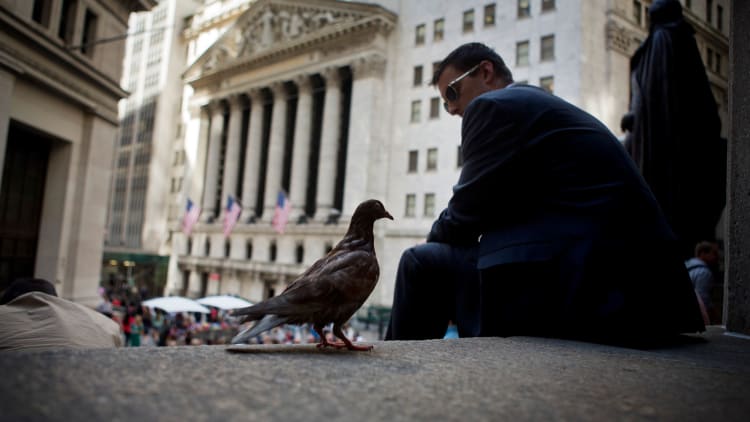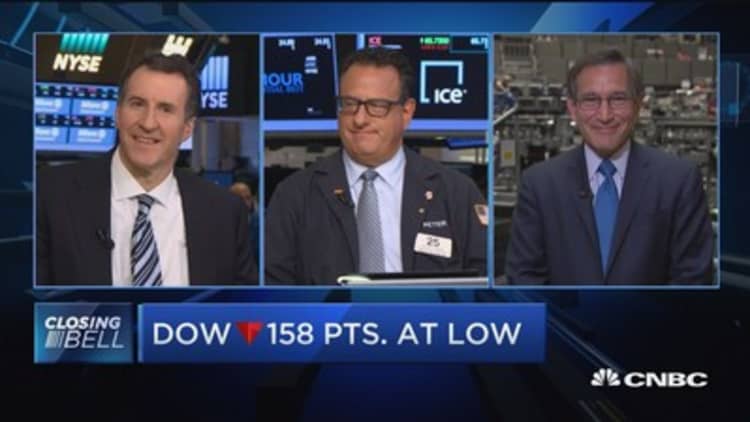
Traders are betting on even calmer stock markets as the persistently climbs higher.
The CBOE Volatility Index (.VIX), known as the best gauge of fear in the market, fell Friday to 9.3, its lowest since Dec. 27, 1993, when the VIX hit a low of 8.89.
Market analysts noted the decline in the VIX reflects the underlying nature of the investment product — tracking the bets of options traders on whether the S&P 500 index will rise or fall. Options give traders the right to buy or sell an asset at a preset price.
The S&P has been churning steadily higher, giving options traders little reason to bet on a large, volatile drop.
Dan Deming, a managing director at KKM Financial, said, "Realized [volatility] continues to be reined in and options traders are adjusting markets accordingly."
Some point to a disconnect between a rising index and persistently low volatility. But Deming said, it "has nothing to do with complacency or the VIX being broken."
It "has everything to do with lack of realized volatility and markets discounting any down move in the SPX, which once again was the right mindset today as we see the SPX bouncing back after morning weakness."
U.S. stocks closed very mildly lower, after hitting records earlier in the week. The Nasdaq composite broke a 10-day win streak Friday, while the S&P 500 closed 0.04 percent lower Friday, within a quarter of a percent from its all-time high hit Thursday.
VIX performance (1993 - 2017)
Source: Reuters
The gains have surprised many, despite consistent talk of the uncertain political environment, both within the U.S. and internationally.
JJ Kinahan, chief strategist at TD Ameritrade, noted that the low levels in the VIX are reducing even the amount of hedging activity against a sharp leap in the index.
They're saying, "we're OK taking a risk. The VIX may move 40 percent, going up to 14, before we need to hedge," Kinahan said. "So many people were hedging and getting punched in the face."
In early July, analysts noted that one measure of bets for a calmer market had reached a record high.
Robert Whaley, a finance professor at Vanderbilt University, created the VIX for the CBOE in 1992 to measure the level of fear or concern about the direction of the market over the next 30 days.
"Institutional investors seem to be confident about what the market is going to do," Whaley told CNBC in a phone interview about the VIX's persistently low levels.
The VIX closed below 10 on Friday for a seventh-straight day, a record.
Friday also marked an options expiration day, which may have contributed to the move in the VIX.
Frank Cappelleri, executive director, institutional equities at Nomura Instinet, pointed out the S&P 500 has only gained more than 1 percent twice this year, and fallen more than 1 percent on two other occasions.
"The bottom line is that emotion leads to sizable daily movement," Cappelleri said. "So, I think instead of wondering when the VIX will finally awake from its slumber, we should monitor the daily price swings. When a cluster of extreme movement finally arrives, it could be a signal that things are indeed changing, but not before."
— CNBC's Liz Moyer contributed to this report.
WATCH: Market highs, VIX lows generally good



